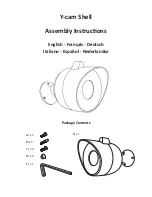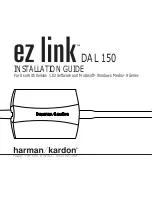
NetCol8000-A013 In-room Air Cooled Smart Cooling
Product
User Manual (800 mm Width)
5 System Operation and Maintenance
Issue 05 (2019-12-20)
Copyright © Huawei Technologies Co., Ltd.
95
Alarm
ID
Alarm Name System
Action
Possible Causes
Solution
719
InUnit
EEPROM
Alarm
--
The E square of the main
control board of the indoor unit
is faulty.
Replace the main control board
of the indoor unit.
720
InUnit Flash
Alarm
The
compressor
shuts down.
The flash memory of the main
control board of the indoor unit
is faulty.
Replace the main control board
of the indoor unit.
721
InUnit Clock
Abnormal
Alarm
--
The clock circuit of the main
control board of the indoor unit
is faulty.
Replace the main control board
of the indoor unit.
722
Smoke Sensor
Power Alarm
--
The voltage of the smoke
sensor circuit of the main
control board of the indoor unit
exceeds the preset threshold.
Replace the main control board
of the indoor unit.
723
Evaporator
Coils Temp
Invalid
--
1.
The temperature sensor
cable is not properly
connected.
2.
The temperature sensor is
faulty.
1.
Check the cable connection
to the temperature sensor.
2.
Maintain or replace the
temperature sensor.
801
Return Air
High Temp
Alarm
--
1.
The heat load is high, or the
cooling capacity is
insufficient.
2.
The return air temperature is
high shortly after the unit is
started.
3.
The ambient temperature
exceeds the upper threshold.
4.
The return air high
temperature alarm threshold
is inappropriate for the
working conditions.
5.
The temperature displayed
by the temperature sensor is
different from the actual
temperature.
1.
Add smart cooling products.
2.
Check whether other causes
exist if the alarm is not
cleared in a long time after
startup.
3.
Check the ambient
temperature.
4.
Adjust the return air high
temperature alarm threshold.
5.
Calibrate or replace the
temperature sensor.
802
Return Air
Low Temp
Alarm
--
1.
The heat load is low or the
cooling capacity is too high.
2.
The ambient temperature is
too low.
3.
The return air low
temperature alarm threshold
is inappropriate for the
working conditions.
4.
The temperature displayed
by the temperature sensor is
different from the actual
temperature.
1.
Reduce the number of smart
cooling products.
2.
Check the ambient
temperature.
3.
Adjust the return air low
temperature alarm threshold.
4.
Calibrate or replace the
temperature sensor.
















































